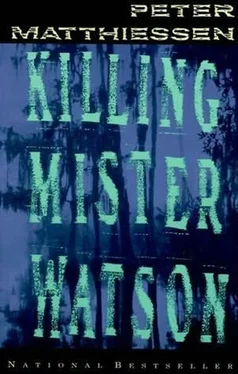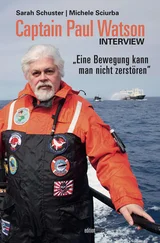Peter Matthiessen - Killing Mister Watson
Здесь есть возможность читать онлайн «Peter Matthiessen - Killing Mister Watson» весь текст электронной книги совершенно бесплатно (целиком полную версию без сокращений). В некоторых случаях можно слушать аудио, скачать через торрент в формате fb2 и присутствует краткое содержание. Жанр: Современная проза, на английском языке. Описание произведения, (предисловие) а так же отзывы посетителей доступны на портале библиотеки ЛибКат.
- Название:Killing Mister Watson
- Автор:
- Жанр:
- Год:неизвестен
- ISBN:нет данных
- Рейтинг книги:4 / 5. Голосов: 1
-
Избранное:Добавить в избранное
- Отзывы:
-
Ваша оценка:
- 80
- 1
- 2
- 3
- 4
- 5
Killing Mister Watson: краткое содержание, описание и аннотация
Предлагаем к чтению аннотацию, описание, краткое содержание или предисловие (зависит от того, что написал сам автор книги «Killing Mister Watson»). Если вы не нашли необходимую информацию о книге — напишите в комментариях, мы постараемся отыскать её.
Killing Mister Watson — читать онлайн бесплатно полную книгу (весь текст) целиком
Ниже представлен текст книги, разбитый по страницам. Система сохранения места последней прочитанной страницы, позволяет с удобством читать онлайн бесплатно книгу «Killing Mister Watson», без необходимости каждый раз заново искать на чём Вы остановились. Поставьте закладку, и сможете в любой момент перейти на страницу, на которой закончили чтение.
Интервал:
Закладка:
After Bill House left, Old Man Chevelier kind of adopted Leon and young Liza and they visited with him and took care of him and kept an eye on him, and he stayed right there on Possum Key until he died.
Until the second half of the nineteenth century, the southern half of the Florida peninsula, and in particular its far southwestern region, was scarcely known. This rainy and mosquito-ridden labyrinth of mangrove islands and dark tidal rivers was all but uninhabited, despite the marvelous abundance of its fish and game. "The Ten Thousand Islands," as one naturalist has written, "is a region of mystery and loneliness: gloomy, monotonous, weird, and strange, yet possessing a decided fascination. To the casual stranger each and every part of the region looks exactly like the rest; each islet and water passage seems but the counterpart of hundreds of others. Even those… familiar with its tortuous channels often get lost… wandering hopeless for days among its labyrinthine ways."
Of the thousands of islands, less than a hundred-mostly in the north-rise more than one foot above sea level, and on most of these, the high ground is too limited to build upon: the more or less habitable barrier islands include perhaps thirty on the Gulf with sand banks up to six feet high and about forty "hammock" islands farther inland. On these, as a precaution against hurricane, the Calusa constructed substantial shell mounds-or, more properly, hilly ridges-up to twenty feet in height, on which pockets of soil suitable for farming had accumulated. There were also extensive mainland mounds at Turner River that were later farmed by Chokoloskee pioneers.
Chatham Bend, the largest shell mound between Chokoloskee and Cape Sable, is first described in the journals of Surgeon-General Thomas Lawson, who in February of 1838, during the First Seminole War, led a U.S. Army expedition against "the Spanish Indians"-people of Calusa ancestry returned from Cuba to Florida by the Spanish-to discourage smuggling of guns and ammunition from Cuba to the Seminoles.
We anchored opposite the mouth of Pavilion River, near which we saw a smoke, and on the banks of which, six or eight miles up, the Pilot stated positively that we would find twenty families of Indians, and perhaps others from the interior of the country… Here again we were doomed to meet with disappointment, for the town was tenanted by no living thing, man or beast… The site of this village is very beautiful… and the ground on both sides of the river more valuable than any I have seen in this section of the country. The only objection to it is, that there is no fresh water on it, or in its vicinity…
A later Army expedition found a village of twelve palm-thatch houses and a large forty-acre garden, but which Indians these were was not determined; they may have been the last wild band of Mikasuki under Arpeika, catted Sam Jones, or perhaps a remnant of the "Spanish Indians." In the late eighties Pavioni, as the Indians called it, was occupied briefly by Richard Hamilton, who sold his claim to a Frenchman, M. A. LeChevallier, who sold it in turn to a fugitive, Will Raymond.
Richard Hamilton and Mr. Chevallier, who settled nearby islands, were Mr. Watson's closest neighbors for many years. Hamilton was rumored to be a grandson of the great Spanish Indian war chief Chekaika, who perpetrated the massacre of Dr. Perrine and others at Indian Key in 1840 and who was subsequently shot, then hung, by Lieutenant Colonel Harney's expedition of pursuit from the Miami River into the Everglades.
Our tent was pitched within a short distance of the tree on which Chakika was suspended. The night was beautiful, and the bright rising moon displayed to my view as I lay on my bed the gigantic proportions of this once great and much dreaded warrior. He is said to have been the largest Indian in Florida, and the sound of his very name to have been a terror to his Tribe.
The expedition continued south and west, emerging at last at what is now called Harney River-the first white men ever to traverse the peninsula of southern Florida.
On the Coast and Geodetic Survey charts for 1889, Chatham Bend is identified as "the Raymond Place," but Will Raymond gave up Chatham Bend a few years later, having been killed by sheriff's deputies from Key West. Why Richard Hamilton, then Chevelier, abandoned that large mound so speedily is more mysterious. But Pavioni had a malevolent reputation, and E.J. Watson, who acquired the rights from the Widow Raymond, was the only white man ever to remain more than a year or two; he farmed the Bend for nearly twenty years.
Monsieur LeChevallier, known familiarly along that coast as "Jeen Chevelier" (pronounced "Shovel-leer") or simply "the old Frenchman," was a significant figure in Mr. Watson's early years in southwest Florida. Monsieur Chevelier (as we may as well call him, since "Chevelier Bay" commemorates this spelling in the Ten Thousand Islands) was probably the first large-scale commercial hunter in that region of egret and other species killed for their decorative plumes. In 1879, he established a bird plume operation at Tampa Bay which apparently occupied him for about five years. In 1885, he hired the sloop Bonton to conduct his party from the new settlement on the Miami River around the Keys to the Ten Thousand Islands. The party included Louis and Guy Bradley, young plume hunters of the region. (Guy Bradley later became the first Monroe County game warden, with salary paid by the Audubon Society. He was murdered by a former associate in 1905-one of the several local killings popularly attributed to Mr. Watson, who by that time had become notorious.) Charles Pierce kept a lively journal of the voyage, which took place in the spring and summer of that year.
I had heard a great deal about an old Frenchman, M. LeChevelier, a taxidermist, collector of bird skins and plumes, who was living up the Miami river… Mr. Chevelier is French and cannot talk good English… Pelican skins are the main object of the trip, plumes next, also cormorant skins, in fact all kinds of birds. Mr. Chevelier has a market for all of them in Paris. He gets fifty cents for the pelican skins, twenty-five cents for least tern, $10 for great white heron and $25 for flamingo. Great white herons are scarce and flamingos more so. If it was not for that we would soon make the old man rich.
Despite a right hand crippled by his own gun, Chevelier blazed away with his young associates. The Bonton log is a catalogue of destroyed birds, relieved here and there by lively accounts of storm and wayfarers, mosquitoes, and old Key West, where the party was welcomed and assisted by Chevelier's associate, "Capt. Cary." Presumably this is Elijah Carey (see House and Hamilton interviews), who would later join Chevelier in his plume-birding operations.
In the Ten Thousand Islands, the Bonton anchored off Shark River and also "inside of Pavilion Key," in pursuit of roseate spoonbills, egrets, boobies, and white pelicans. Farther up the coast, "we came to an island that had a palmetto shack on it where lived an old Portuguese named Gomez with his cracker wife. Mr. Chevelier had known Gomez some years before." This was Gomez or Panther Key, from which Gomez guided them on a hunt for roseate spoonbills (or "pink curlew") the next morning.
Juan Gomez, like Mr. Watson, was a local legend in the Islands, still celebrated for the claim that in his youth he had been addressed kindly by the emperor Napoleon in Madrid, Spain, and had later sailed with a buccaneer named Gasparilla. By his own calculation, Gomez was 108 years old at the time of the Bonton's visit, and he was still there in 1900, when a visitor described this region as "that maze of intricate channels… a place that was once the refuge of pirates, and even now retains the flavor of bloodthirsty tales."
Читать дальшеИнтервал:
Закладка:
Похожие книги на «Killing Mister Watson»
Представляем Вашему вниманию похожие книги на «Killing Mister Watson» списком для выбора. Мы отобрали схожую по названию и смыслу литературу в надежде предоставить читателям больше вариантов отыскать новые, интересные, ещё непрочитанные произведения.
Обсуждение, отзывы о книге «Killing Mister Watson» и просто собственные мнения читателей. Оставьте ваши комментарии, напишите, что Вы думаете о произведении, его смысле или главных героях. Укажите что конкретно понравилось, а что нет, и почему Вы так считаете.












